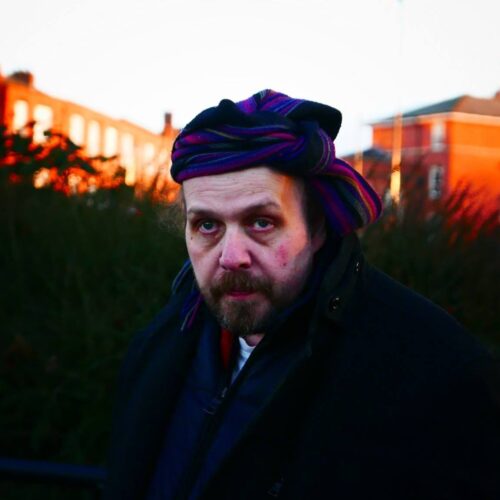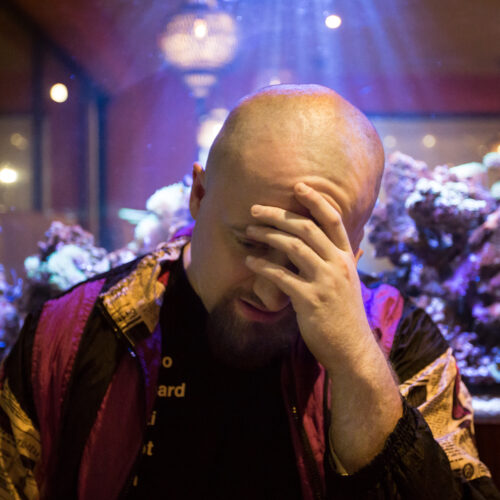
The Trumpet Fists of Saint Nicholas – Part 1
Programmatic music is hardly a new idea; for hundreds of years, composers have been writing music that attempts to depict a story.
Recently I have become interested in composing works that present multiple superimposed narratives; music that is about more than just one thing. That is, by combining and juxtaposing stories I can create pieces that operate in structurally unusual ways.
To illustrate what I mean by this, I am going to tell two stories – the first of which is how I came to compose The Trumpet Fists of Saint Nicholas. The second will deal with what happens in the piece itself.
Whilst at the 2017 Edinburgh Fringe Festival my friend, the comedian Seán Morley, explained to me an unusual custom that emerged in the Middle Ages. On the feast of Saint Nicholas (the 6 December) a chorister was elected to be a boy bishop. He would dress in full bishop attire, and engage in mock ceremonies to the amusement of the general public. Then, on the Holy Innocents’ Day (the 28 December) he would step down. (These dates are symbolically apt; Saint Nicholas is the patron saint of children, and Holy Innocents’ Day commemorates the mass infanticide committed by Herod).
Shortly after this, I was approached by James Henshaw (Chorus Master of the English National Opera), to write a work his orchestra, The Outcry Ensemble; a concerto for two trumpets and string orchestra.
I am an atheist and know little of religious tradition, so in the early stages of writing this piece I spoke to my friend, the composer Piers Tattersall (who is both very knowledgeable and Roman Catholic), who explained to me how Saint Nicholas had, at the First Council of Nicaea, become so angry with the heretical Bishop Arius that he hit him!
I was fascinated by both boy bishops and the story of a violent Saint Nicholas, and for many composers exploring either one of these ideas would be sufficient to generate enough material for a single piece. However, I have a short attention span, and thus I tend to favour music with lots of ideas and unpredictable structures. Therefore, I decided I needed to write about both ideas simultaneously, chronologically exploring both religious and non-religious ceremonies that take (or took) place between the 6 December and the 28 December.
In developing these ideas further, I examined what it was the attracted me to the concept of boy bishops. Firstly, I was intrigued how this irreligious, folk tradition (of dressing up, and pretending to be an adult) had found itself embedded within a serious, religious tradition, and that there was a gentle mockery at play. Secondly, I have always find it funny when objects or characters are presented at the ‘wrong size’ (something that occurs fairly frequently in the comedy of Tim and Eric, for example). Consequently, I decided that in my piece, one of the trumpets would be never muted, and the other would be always muted; the muted trumpet acting as a parody of the unmuted. I also extracted a string quartet from the orchestra; so that it could mock the larger string force present in the work.
Whilst I knew what instruments I was writing for, and had a solid idea of the extra-musical material I was exploring, I did not yet have an understanding of the shape the piece would take. For inspiration, I asked Seán for his three favourite non-religious rituals to which he replied:
- Commedia dell’arte
- The Lord of Misrule
- Takanakuy
I found Commedia dell’arte fascinating, but it didn’t really ‘fit’ the piece. Researching the Lord of Misrule (an English tradition), led me to a similar ancient Roman phenomenon; Saturnalia. Between the 17 and 23 December (of the Julian calendar) this festival was held in honour of the god, Saturn, and featured drinking, gambling, partying, role reversal (masters would serve their slaves), and the election of a mock king who would rule over the festivities. There were human sacrifices too; thus, a ritual tinged with brutality. Takanakuy is a Peruvian festival which also combines violence and alcohol, and translates as “to hit each other”. Occurring on Christmas day, inhabitants of Chumbivilcas Province fight each other to settle disputes, and drink alcohol to numb the pain of the day’s events.
Embed from Getty Images
With this information, I knew what shape my piece would take (more or less); an exploration of festivals, rituals, piety, mockery, and violence, presented in chronological order from the 6 to the 28 December.
Images: Nicholas strikes his opponent. Fresco from the Soumela Monastery (Turkey), Marco Prins
Two women fight during Takanakuy celebrations in the region of Chumbivilcas, Getty Images





